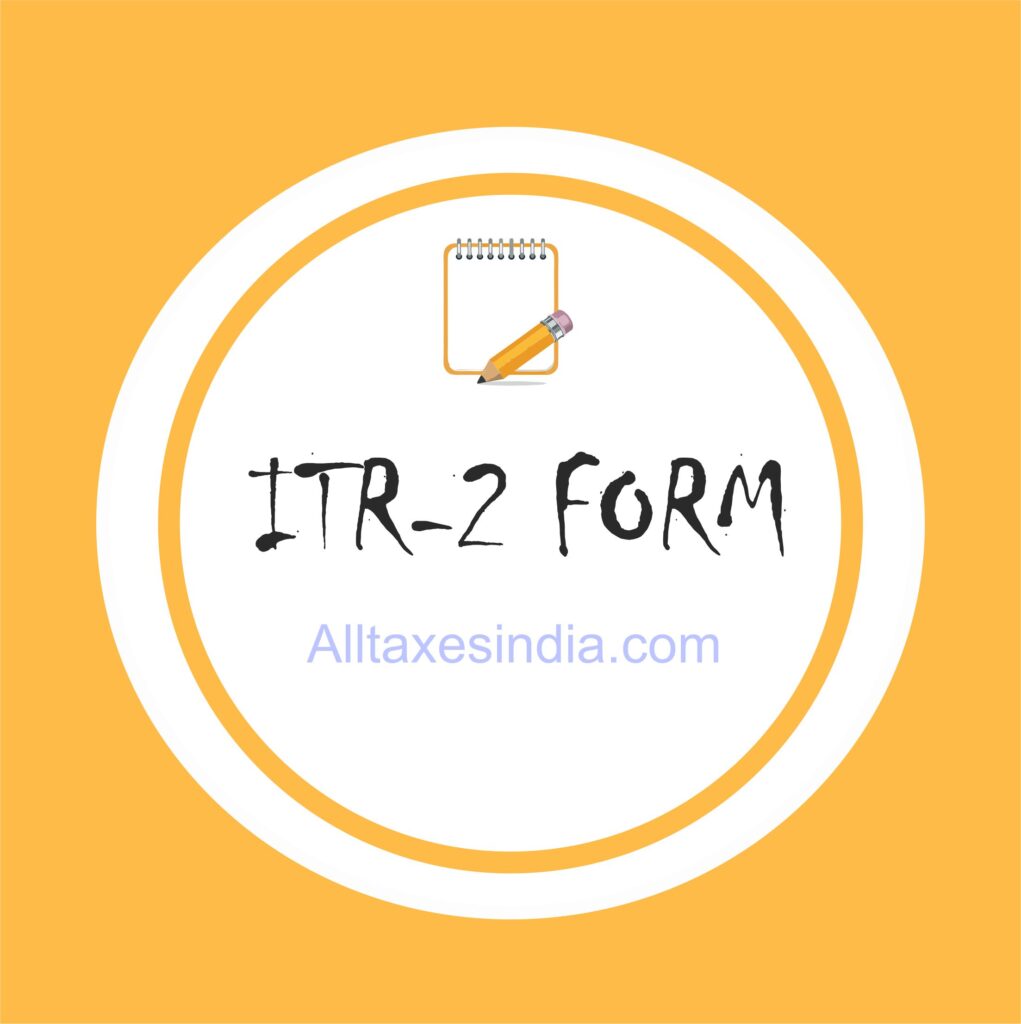ITR-2 Return Filing

ITR-2 Return Filing
ITR-1, or Sahaj, is a simple income tax return form for salaried individuals with income up to Rs. 50 lakh. It covers income from salary, one house property, and other sources like interest. Filing can be done online, requiring Form 16, deductions, and bank details for accurate submission.
Expert Assistance for ITR 2 Form Filing
Expert Assistance for ITR-2 Form Filing
ITR-2 is designed for individuals and HUFs (Hindu Undivided Families) with income from sources beyond salary and pension. Filing ITR-2 can be complex as it includes income from multiple house properties, capital gains, foreign assets, or income, and agricultural income above Rs. 5,000.
Expert assistance ensures:
- Accurate Form Selection: Professionals determine if ITR-2 is appropriate based on your income sources.
- Detailed Documentation: Guidance on organizing and submitting documents like Form 16, capital gains statements, and investment proofs.
- Tax Optimization: Advice on deductions and exemptions to reduce tax liability effectively.
- Error-Free Filing: Professionals verify data accuracy to avoid discrepancies with Form 26AS and prevent penalties.
- Compliance with Regulations: Experts stay updated with tax law changes, ensuring full compliance
ITR-2 Return Filing
A Complete Guide to ITR-2 Return Filing
ITR-2 is a specialized income tax return form for individuals and Hindu Undivided Families (HUFs) who have income from multiple or complex sources beyond just salary or pension. It is ideal for those with income from capital gains, multiple properties, or foreign investments. Below is an in-depth explanation of ITR-2 and its filing process.
Who Should File ITR-2?
ITR-2 is applicable to:
- Individuals and HUFs with income exceeding Rs. 50 lakh.
- Those with income from more than one house property.
- Individuals earning capital gains (short-term or long-term) from the sale of assets like property, stocks, or mutual funds.
- People with agricultural income exceeding Rs. 5,000.
- Residents with foreign income, foreign assets, or financial interest in foreign entities.
- Individuals earning income as a partner in a firm (not as a proprietor or self-employed).
- Individuals with dividend income above Rs. 10 lakh, subject to additional tax under Section 115BBDA.
Who Cannot File ITR-2?
You cannot use ITR-2 if:
- You have income from business or profession. (For such income, ITR-3 or ITR-4 is applicable.)
- You are eligible to file ITR-1 (Sahaj) due to simpler income structures.
Sources of Income Covered Under ITR-2
ITR-2 is used for reporting income from:
- Salary or Pension: If income is from employment.
- House Property: Income from owning more than one house property (self-occupied or rented).
- Capital Gains: Income from the sale of assets such as shares, mutual funds, or real estate.
- Other Sources: Interest income, dividends, winnings from lotteries, or similar sources.
- Foreign Income or Assets: Reporting assets or income earned outside India.
- Agricultural Income: For income exceeding Rs. 5,000.
Documents Required for Filing ITR-2
To file ITR-2 accurately, you will need:
- Form 16: For salaried individuals, issued by the employer.
- Form 26AS: A consolidated tax statement that shows taxes paid, TDS, and tax refunds.
- Bank Account Details: For reporting income from interest and for refunds.
- Capital Gains Details: Sale and purchase records for stocks, mutual funds, or property.
- Investment Proofs: Documents for claiming deductions under various sections like 80C and 80D.
- Details of Foreign Assets/Income: If applicable, for compliance with disclosure requirements.
Steps to File ITR-2 Online
Filing ITR-2 can be done online through the Income Tax Department’s portal. Follow these steps:
- Log In to the Portal: Go to Income Tax e-Filing Portal and log in using your PAN and password.
- Select ITR-2: Choose the appropriate assessment year and select ITR-2.
- Filling Income Details: Enter your income details, such as salary, capital gains, house property income, and other sources.
- Deductions and Exemptions: Enter claims under sections like 80C, 80D, or any other applicable deductions.
- Disclose Foreign Assets: Report foreign assets or financial interests if applicable.
- Review and Submit: Double-check all details and submit the form.
- E-Verification: Verify the return electronically through Aadhaar OTP, net banking, or other methods.
Deductions Allowed in ITR-2
ITR-2 allows individuals to claim tax-saving deductions, such as:
- Section 80C: For investments in PPF, ELSS, life insurance, etc., up to Rs. 1.5 lakh.
- Section 80D: For health insurance premiums.
- Section 80TTA/80TTB: Interest income on savings accounts or deposits (limits apply).
- Section 80G: For donations to charitable institutions.
Key Points About ITR-2 Filing
- ITR-2 is detailed and suited for individuals with complex income structures.
- It is mandatory to disclose all taxable and exempt income.
- Errors in reporting capital gains or foreign assets may attract penalties.
Benefits of Filing ITR-2
- Legal Compliance: Meets your tax obligations under Indian law.
- Claim Refunds: Ensures refunds for excess tax paid.
- Loan or Visa Applications: A filed ITR serves as proof of income and is essential for financial transactions.
- Tax Planning: Proper filing helps in managing taxes effectively.
Conclusion
ITR-2 is an essential form for individuals with income from diverse and complex sources. Filing this form requires accuracy and attention to detail. With proper documentation and following the steps above, you can complete your filing seamlessly
